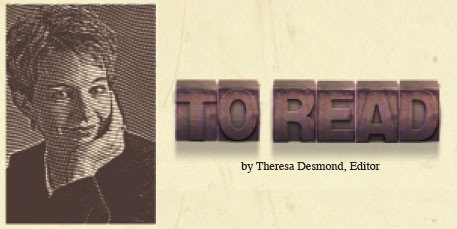|
||
|
There’s something magical about the meeting of two art forms—Wole Soyinka’s poetry and Red Butte Press’ bookmaking— that occurred in the letterpress production of Soyinka’s book Samarkand and Other Markets I Have Known. The press, located in the Marriott Library, rose to the task of creating a vehicle for the Nobel laureate’s words, and the result is a book that elevates the usual reading experience—a feast for eyes and hands, as described by Nettie Pendley on p. 38. If you do turn to p. 38, you’re probably among a shrinking group that gets excited about typographic fonts, paper textures, and woodcuts, at least according to Dana Gioia. This spring, Gioia, the chair of the National Endowment for the Arts, wrote a piece for The Hudson Review, “Disappearing Ink: Poetry at the End of Print Culture,” that quoted studies showing that “the average American now spends about twenty-four minutes a day reading, not just books, but anything— newspapers, magazines, diet tips, and TV Guide. This small investment of time compares with over four hours daily of television and over three hours of radio.” Well. Gioia’s piece actually ends up asserting that this change has not killed poetry; rather, poetry today is more performance based, through forms such as rap and cowboy poetry, having relocated from universities and literary journals to stages and recordings. Say what you will about what this shift has done to the quality of poetry and the way we view poets. What concerns me is “the end of print culture” part of Gioia’s title. Auniversity, as he points out, is generally steeped in print culture, even as other forms of expression become more commonplace. And by “other,” I don’t mean to imply that television and radio are lesser forms. Surely, time spent watching KUED and listening to KUER, for example, is time well spent. But I do mean to imply that we lose something when we spend so little time reading. Specifically, we lose the challenges and rewards that come from reading a complex piece of writing, fiction or nonfiction, that requires sustained concentration; we lose control of the time we have to process a writer’s thoughts (after all, reading allows for pauses of reflection), and we lose the portability of those thoughts; we lose the ability to consider and reconsider, at our leisure, many points of view at once, whether represented through character or summary; we lose the subtleties of discernment, to judge for ourselves, through context and expression rather than appearance, what makes one idea more interesting, believable, and moving than another; we lose a notion of time as measured in chapters or plots, rather than in talk-show seconds and minutes; and we lose the sheer joy of immersing ourselves, in a very intimate way, in a writer’s words and ideas, set down (this column aside) after careful consideration and revision. If print culture becomes mostly USA Today factoids or hyped-up entertainment, we lose our appreciation of the writing of the past and our investment in writing the future. Print culture is not all Matthew Arnold-defined culture, to be sure, nor should it be. But the less time we spend reading, the less able we are to be thrilled by greatness and disappointed by blandness—in whatever form—and to ask for ourselves something more than to be filling time. Without appreciating the act of reading, we can’t fully appreciate the acts of watching and listening, and demand that they be critical, not passive, acts. When Terry Tempest Williams BS’79 MS’84 spoke
as part of the U’s Siciliano Forum panel about the future of
communications some years ago, I remember hers as the lone voice suggesting
that we question technology and be mindful of the pace and rhythm
set by the natural world. Other panelists felt she was being unrealistic,
even unnecessarily fearful. But her reminder is timely—that
our connection to one another through media should be, at bottom,
a very human connection, one that respects and reflects a larger context. |
||

